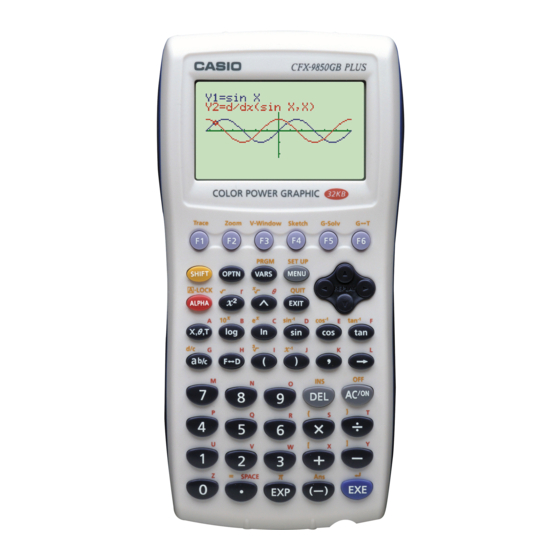Casio CFX-9850GC PLUS Manual de cálculos - Página 2
Procurar online ou descarregar pdf Manual de cálculos para Calculadora Casio CFX-9850GC PLUS. Casio CFX-9850GC PLUS 15 páginas. 6. matrix calculations
Também para Casio CFX-9850GC PLUS: Catálogo de produtos (16 páginas), Especificações (1 páginas), Manual de Comunicações (13 páginas), Manual do programa (18 páginas), Ler este manual primeiro (13 páginas), Manual de funções (14 páginas), Manual do gráfico (8 páginas), Manual do gráfico (6 páginas), Manual do gráfico (12 páginas), Manual do gráfico (12 páginas), Manual do gráfico (12 páginas), Manual do gráfico (12 páginas), Manual do gráfico (10 páginas), Manual de cálculos (13 páginas), Manual de cálculos (18 páginas), Manual de números complexos (6 páginas), Manual de cálculos (6 páginas), Manual de cálculos (20 páginas)

